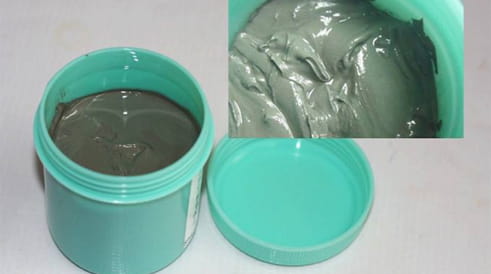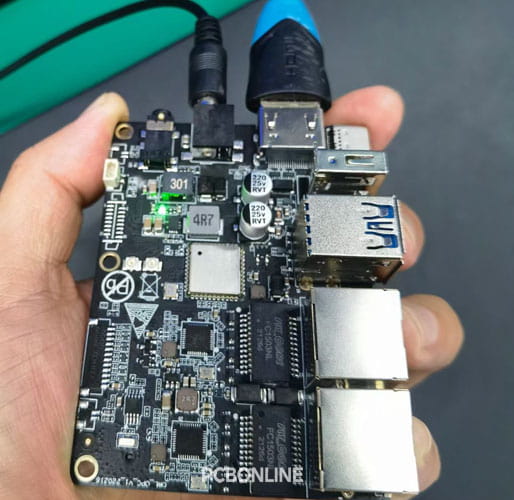Since 2006 when the RoHS directive was issued by the EU, lead-free PCBs have gradually replaced lead-containing PCBs around the world, and lead-free PCB assembly is in demand. Now lead-free PCB assembly is universal, and lead-containing PCB assembly is only in limited demand in some areas of Southeast Asia, South Asia, and Africa. Europe, America, East Asia, the middle east, and Australia, all require lead-free PCB assembly.
According to RoHS and REACH, the lead content of solder paste used for PCB assembly has to be within 0.1%. For lead-free PCB assembly, the lead-free requirement (Pd < 0.1%) is throughout the whole EMS manufacturing process, including electronic components, PCB copper clad laminates (CCL), PCB inks, surface finishes, solder paste, enclosures, packaging bags/boxes, and all equipment/devices/jigs used during the fabrication process.
In the one-stop lead-free PCB assembly process, PCB CCL, PCB ink, and electronic components are lead-free. Lead-free PCB assembly requires lead-free surface finishes, lead-free solder paste, lead-free reflow soldering, and lead-free wave soldering.
Surface Finishes for Lead-Free PCB Assembly
For lead-free PCB assembly, the surface finishes for PCBs can be ENIG, OSP, ENEPIG, lead-free HASL, gold plating, immersion silver, immersion tin, and carbon ink.
For flexible PCBs, lead-free HASL can't be used, and you can use OSP or ENIG to replace it.

OSP is easy to oxidize, and if the circuit boards are not assembled immediately after PCB fabrication, the PCB manufacturer has to package the circuit boards panel by panel in vacuum bags. Only when placing the lead-free PCBs on the SMT lines, should they be unpacked. And OSP PCBs can't be baked before PCB assembly. Also, take note that the storage period for OSP PCBs is within 30 days. If the storage period is beyond 30 days, return the boards to the PCB manufacturer to apply OSP again.
ENIG and ENEPIG have excellent solderability and are used for high-reliability PCBAs. Gold plating is usually used for gold fingers/edge connectors on the PCB edges used for the connection.
All surface finishes are available from the advanced PCB manufacturer PCBONLINE. And we can make selective OSP, lead-free HASL, and ENIG on the lead-free PCBs.
Solder Paste for Lead-Free PCB Assembly

The lead-free solder paste is composed of Sn/Ag/Cu/Bi alloy powder and paste. Lead-free solder paste follows the RoHS directive and is in green bottles. Solder paste is stored at 2°C to 8°C and used at 22°C to 28°C.
How is solder pasted used in the lead-free PCB assembly process?
For OSP PCBs, the solder in the solder paste melts and forms metallic compounds with copper pads. For PCBs with other surface finishes, the solder, surface finish, and copper pads form metallic compounds. And the flux in the solder paste activates the solder and evaporates away.
Reflow Soldering Temperatures for Lead-Free PCB Assembly

Reflow soldering is the most important step of lead-free PCB assembly. The reflow temperatures follow the lead-free reflow profile and include the preheat stage, soak stage, reflow stage, and cooling stage. For lead-free FR4 PCBs, the peak temperature range is 240℃ to 270℃. Compared with lead-containing PCB assembly, the reflow soldering temperatures are about 30℃ higher.
For thick-copper PCBs, heat transfers so fast, and the reflow temperatures have to be higher, as the tin alloy on the PCB pads has insufficient soldering due to insufficient temperatures. According to our rich experiences, we set up the peak reflow temperatures to be 290℃ to 300℃.
What is Going on During Lead-Free PCB Assembly?
For lead-free PCB assembly, the whole SMT and THT assembly lines should totally be lead-free. This means the PCBA lines assemble only lead-free PCBs. Though lead-free PCB assembly lines are capable to assemble lead-containing PCBs, once it's done, the machines are polluted by lead and can't be used for lead-free PCB assembly anymore.

SMT assembly is automatic, and all the PCBA fabrication specifications have been designed and programmed by the CAM engineer from the PCBA manufacturer. And the lead-free PCB assembly process is:
- First, the solder paste is silkscreen printed through the SMT stencil on the PCB pads.
- Then the solder paste inspection machine inspects the solder paste on PCB pads to make sure its size, thickness, and position are qualified for reflow soldering.
- Next, the surface-mount devices (SMD) are placed on the PCB pads by robot arms.
- Before reflow soldering, if there are BGAs in the SMDs, the PCBA manufacturer conducts the x-ray inspection to make sure the solder balls of BGAs are qualified for reflow soldering.
- In the reflow soldering oven, the temperatures have already been adjusted to follow the reflow soldering profile custom to the lead-free PCBs. In different temperature zones in the oven, the whole PCBA is first preheated and then soldered. During the process, the alloy powder in the solder paste melts and wets the PCB pads. After fully wetting, the SMDs are soldered firmly on the PCB, and the PCBA is cooled down gradually and goes out of the reflow oven.
- If the lead-free PCB has dual component-mounting sides, the PCBA returns the SMT line to mount the other side. If the PCBA is easy to oxidize during reflow soldering, choose nitrogen reflow soldering for your lead-free PCB assembly.
- Then, the PCBA manufacturer conducts the automatic optical inspection (AOI) to make sure of no significant issues such as missing components, offsets, tombstones, bridges, voids, etc.
- Next, the PCBA goes to the through-hole (THT) assembly line, where the pins of THT components insert the through-holes.
- In the wave soldering step, the PCBA is placed in a jig, and only the areas that need wave soldering are exposed. The PCBA in the jig is first preheated and then goes into the wave soldering oven. In the liquid tin flow, the THT component pins are soldered with the THT hole walls.
- If the THT components require different wave soldering temperatures, it's better to choose selective soldering instead of wave soldering to avoid thermal shocks.
- Finally, the long THT component pins are trimmed to be 1mm to 2mm long, cleaned, and visually inspected.
- After the lead-free assembly, your PCBA manufacturer conducts functional testing, conformal coating, thermal aging, IC programming, and other value-added services on your PCBA according to your needs.
One-Stop Lead-Free PCB Assembly Manufacturer - PCBONLINE
PCBONLINE is a one-stop lead-free PCB assembly source factory manufacturer founded in 1999. We have two large advanced PCB manufacturing bases and one PCB assembly factory. You can have lead-free PCBs manufactured and assembled to box builds at one stop from PCBONLINE.

Why have lead-free PCB assembly from PCBONLINE?
- PCBONLINE fabricates all kinds of lead-free PCBs from prototypes to bulk production, including lead-free FR4 PCBs, ceramic PCBs, aluminum PCBs, FPCs, rigid-flex PCBs, high-frequency PCBs, copper-base PCBs, thick-copper PCBs.
- PCBONLINE provides turnkey lead-free PCB assembly following IPC A-610 Class 2/3 standards.
- Besides PCB fabrication and assembly, we provide functional testing, conformal coating, IC programming, thermal aging, and box-build assembly.
- From electronic components to box builds packages, the whole EMS manufacturing is lead-free.
- Our PCB and PCBA manufacturing is certified with RoHS, REACH, ISO 9001:2015, IATF 16949, IPC, and UL.
- Free sample and functional testing for bulky PCBA production.
We provide one-on-one engineering support throughout your project. And the electronic components we source are from original factories and direct first-class agents. If you feel interested in getting a PCBA quotation from PCBONLINE, please send your Gerber and BOM to info@pcbonline.com. We will review your documents and reply to you quickly.
Conclusion
Lead-free is the necessary and basic requirement for PCBAs and electronic box builds in most of the world, and we default all PCBs and PCBAs are lead-free. For lead-free PCB assembly, please make sure you choose the PCBA manufacturer whose PCB assembly lines are used only as lead-free. PCBONLINE is a reliable and cost-effective lead-free PCBA manufacturer, and you can yield successful results by working with it.




